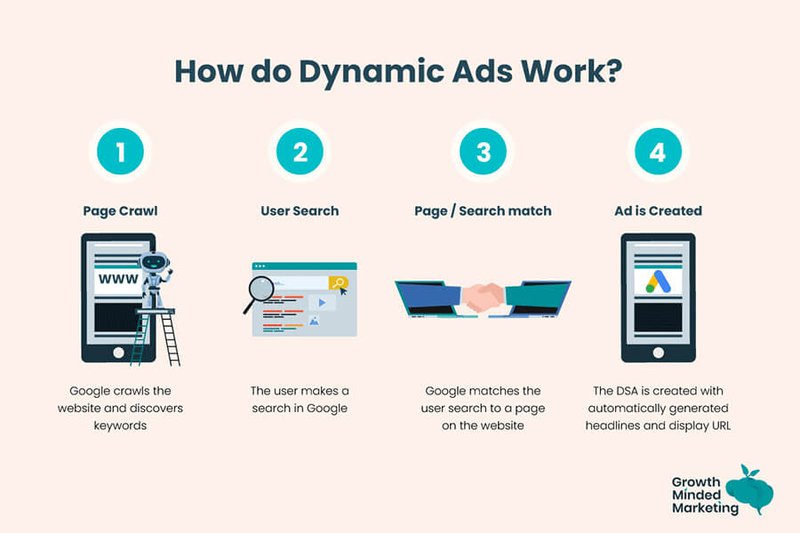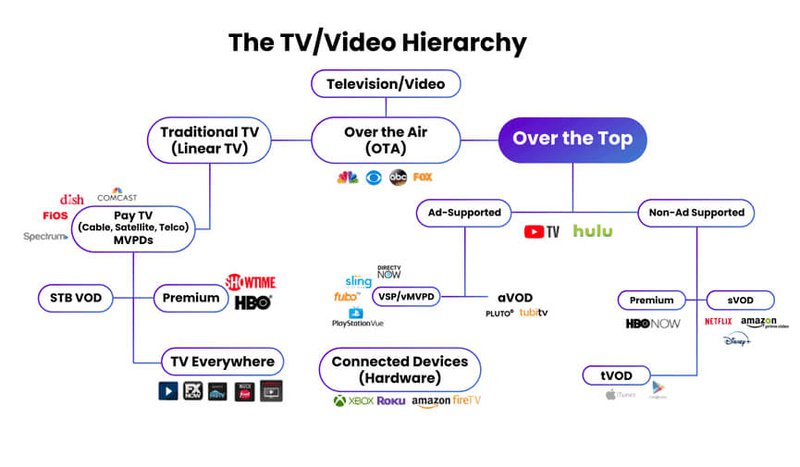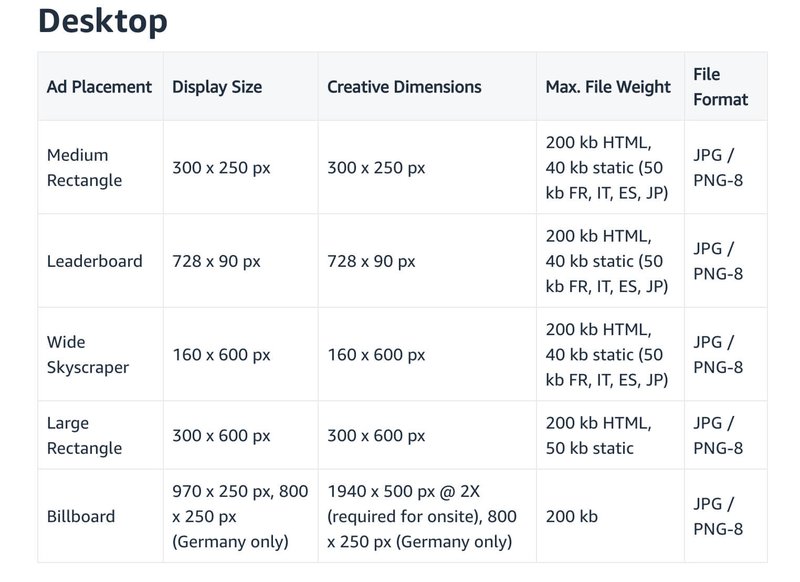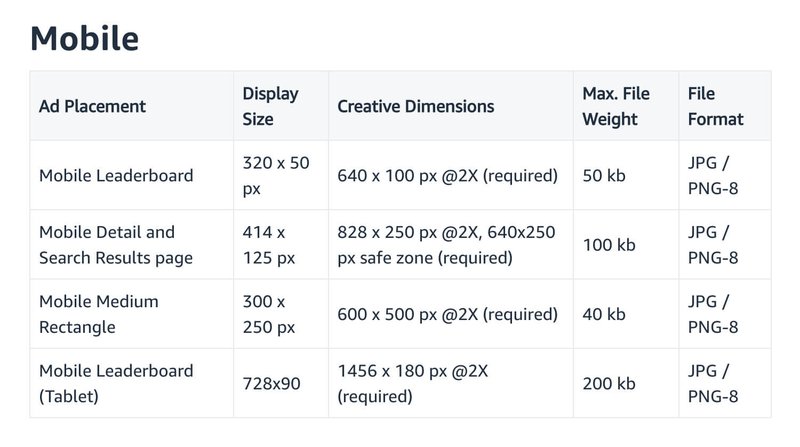The A to Z Guide to Amazon DSP Ads
Looking for a powerful way to boost your Amazon sales? Look no further than Amazon Demand-Side Platform (DSP) advertising - the PPC platform every Amazon agency uses to level-up results for eCommerce stores.
Updated November 7, 2024
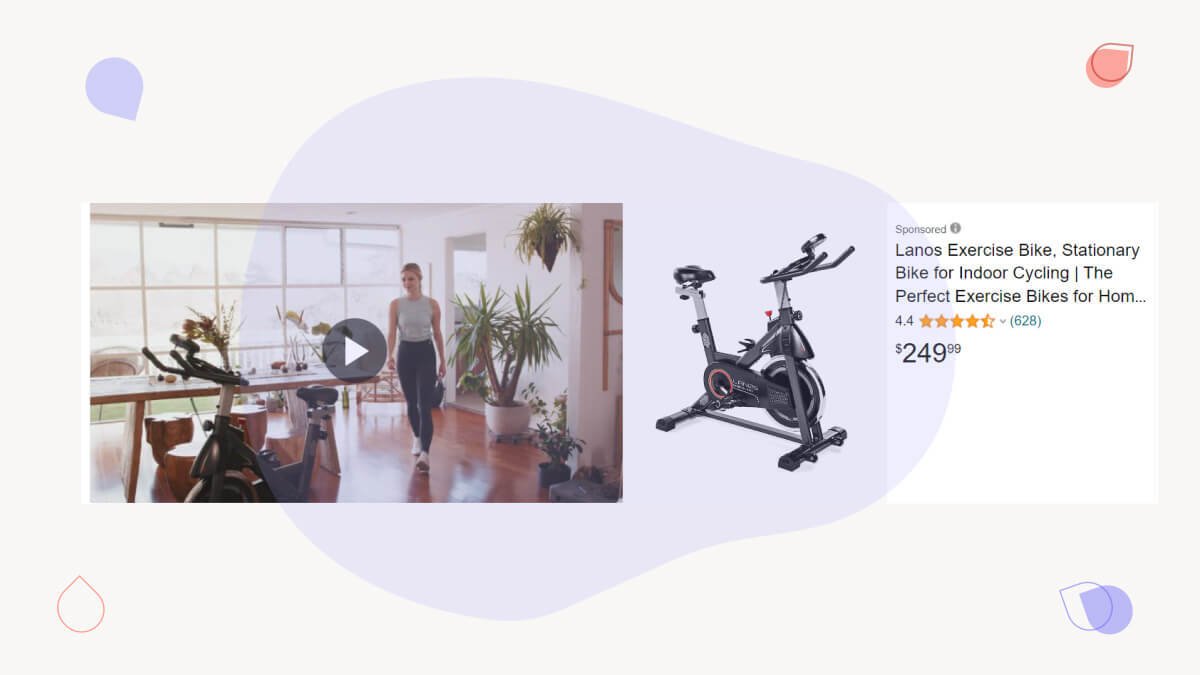
Looking for a powerful way to boost your Amazon sales? Look no further than Amazon Demand-Side Platform (DSP) advertising - the PPC platform every Amazon advertising agency uses to level up results for eCommerce stores.
With DSP, Amazon offers an incredible opportunity for e-commerce marketers to reach their audiences through highly targeted ad campaigns. In this blog post, we'll explore what Amazon DSP advertising is, how it works, how it can benefit your e-commerce business, and how to leverage it as an extension of your Amazon PPC.
What is DSP in Amazon advertising?
In Amazon advertising, a DSP or demand-side platform is a powerful tool that allows advertisers to target potential customers in real-time. DPS is a platform that lets you bid on ad space across the internet rather than just on Amazon itself, allowing you to target your audience across multiple sites and devices with pinpoint accuracy.
Amazon’s DSP advertising enables merchants and non-Amazon merchants to bid on advertising placements across Amazon-owned sites and leading publisher sites. You can use this product whether you own an Amazon store or not.
On Amazon DSP, you can either use the self-service option or the Managed-Service option.
The biggest benefits of Amazon Demand Side Platform ads
Amazon's demand-side platform (DSP) provides a powerful advertising solution for businesses. With its advanced targeting options and access to Amazon's massive audience, DSP allows companies to reach their ideal customers with precision and efficiency, resulting in increased brand awareness, sales, and return on investment.
The platform's real-time reporting and optimization features enable businesses to refine their campaigns and maximize their results with audience insights.
Not convinced? Consider these benefits:
Meet customers where they are
With advanced targeting options such as in-market audiences and retargeting, you can effectively reach relevant audiences to your brand with messages at the right time, driving higher engagement and purchase rates. Amazon DSP's reporting and analytics tools can provide insights into your campaigns, allowing you to optimize and refine your approach over time for even greater results.
Get market data for your business
Amazon Demand-Side Platform can provide valuable market data on your business through its reporting and analytics features, which allow you to track key metrics and audience insights. By leveraging this data, you can better understand your target audience and adjust your marketing strategies to meet their needs, ultimately increasing the effectiveness of your campaigns.
The audience insights provided by Amazon's advertising platforms are extremely valuable to gauge how well your products fit the market.
More conversions
Target audiences that are most likely to convert based on their past purchase behavior and interests and users who have previously interacted with your brand.
Additionally, DSP allows for cross-device targeting, so you can reach potential customers on multiple devices and improve the chances of conversion.
Finally, using the reporting and optimization tools within Amazon DSP can help you track performance and make data-driven decisions to improve your campaigns and increase your Amazon conversion rates continually.
Leverage Amazon Audiences
Even if you don’t sell products on Amazon, you can use Amazon DSP to advertise and reach your ideal audiences at every stage of the marketing funnel. Here are some ways you can leverage Amazon’s vast database of customers to grow your revenue using different types of custom audiences in the advertising funnel.
Lifestyle Segments
Amazon DSP offers several lifestyle segments marketers can use to target prospective customers. These segments include health and wellness, outdoor enthusiasts, pet owners, fashion and beauty enthusiasts, foodies, and more. These segments allow marketers to reach consumers with a particular interest or behavior related to a specific lifestyle or interest.
In-market segments
In-market segments on Amazon DSP are groups of users actively shopping for a particular product or service category, as indicated by their browsing and search activity on Amazon and other websites.
These segments allow advertisers to target users who strongly intend to purchase within a specific product category, increasing the likelihood of conversion. Examples of in-market segments on Amazon DSP include "automotive," "home and garden," "beauty and personal care," and "electronics."
Retargeting segments
In Amazon DSP, retargeting segments refer to audiences that have previously engaged with your brand or products (like previous customers), such as visitors to your website or viewers of your product listings.
They are targeted with relevant ads to encourage them to complete a purchase or take a desired action. These segments are a powerful tool for maximizing the effectiveness of your advertising campaigns and driving conversions.
Not sure where to start? Consider hiring an Amazon PPC expert or an Amazon agency!
Use first-party data for your ads
First-party data on Amazon Demand-Side Platform refers to data you collect directly from your customers, website visitors, and other sources. This information can be used to create custom audiences that are more likely to convert and personalize ad content and messaging for better audience reach and a higher conversion rate.
Types of Amazon DSP ads
If you want to promote your brand and products on Amazon, Amazon DSP offers various ad types to help you reach your target audience. From display ads to video ads, explore the different types of Amazon DSP ads and discover how they can help you achieve your advertising goals.
Static ads
These ads appear as banners or images and are displayed on Amazon pages, and usually include an image, a CTA, a logo, and the brand name. The main goal of an Amazon DSP static ad is to entice users to take an action (click, download, or buy something, for example.)
Video ads
These ads appear as video clips, and they can be used to showcase a product or service more interactively. Video ads are great for introducing your brand or product to new audiences, generating awareness, and grabbing people's attention.
Dynamic ads
This type of DSP ad is tailored to each user, and is generated by an automated system that uses data about the user's browsing history. Dynamic ads have a more personalized feel than static ads, and thus can lead to better engagement.
Over-the-top video ad
Over-the-top video ads are usually displayed on TV (such as via the Amazon Fire stick.) Although these ads will not lead viewers to a website or product page, they are a good way to grow your brand awareness.
Sponsored Display Ads vs Amazon DSP
Sponsored Display Ads are a type of self-service display advertising solution from Amazon that allows advertisers to promote their products to relevant shoppers as they browse and discover products on Amazon.
On the other hand, Amazon DSP ads are display ads that leverage Amazon's programmatic advertising technology to target audiences off Amazon, across various websites and apps.
While Sponsored Display Ads focus on advertising on Amazon's owned and operated sites, Amazon DSP allows for advertising on a wider range of sites and applications outside of Amazon.
What is the cost of Amazon DSP?
The Amazon Demand-Side Platform operates on a cost-per-thousand-impressions (CPM) pricing model, which means you pay a set price for every thousand impressions your ad receives.
Generally, the average cost of Amazon DSP can range from a few cents to several dollars per thousand impressions. The actual cost of Amazon DSP depends on several factors, such as audience targeting, ad format, and competition.
The self-service option gives you complete control of your campaigns and budget. It is recommended that self-service customers start with a $10,000 advertising cost. This ensures you have enough budget for multiple areas of your advertising funnel.
The managed-service option typically requires a minimum spend of $50,000.
How to fit Amazon DSP in your marketing strategy
To fit Amazon DSP into your marketing strategy, you must:
- Identify your campaign goals and target audience
- Develop a budget and a comprehensive plan for creating and launching your ads on the platform.
- Track your campaign's performance using key metrics like click-through rate, conversion rate, and return on ad spend.
- Adjust your strategy accordingly to maximize your results.
The different types of audiences you can target with Amazon advertising allow you to create opportunities for each marketing funnel stage, including top-of-funnel (awareness), middle-of-funnel (consideration), and bottom-of-funnel (decision) audiences.
Amazon DSP ad specifications
Amazon DSP ad specifications can vary depending on the ad format, placement, and device type. However, common specifications include image size and resolution, file format, character limits for headlines and descriptions, and ad duration for video ads.
It's important to ensure your creative assets meet these specifications to maximize performance and avoid ad rejection.
Best practices for Amazon Demand Side Platform advertising
Ready to add this Amazon Advertising Platform to your marketing and advertising funnel?
Maximizing your ROI on Amazon DSP requires more than just setting up campaigns - you need to know the best practices to optimize your targeting, creatives, and budget allocation.
Here are a few best practices to remember when running Amazon advertising campaigns through DSP.
What is Amazon DSP ad inventory?
Amazon DSP ad inventory is the pool of digital advertising space available to advertisers who want to leverage the Amazon DSP platform. This inventory includes a variety of digital ad placements across Amazon-owned properties such as Amazon.com, IMDb, and Kindle, as well as external publisher sites that are part of the Amazon Publisher Services network.
Advertisers can use a range of creative formats and targeting options to reach their desired audience on this inventory.
In addition to standard display ad units, the Amazon DSP ad inventory also includes high-impact ad formats, such as homepage takeovers and video ads, which can help increase brand awareness and engagement.
Amazon's vast audience of shoppers provides advertisers with a large and diverse set of users to target with their ads, including audiences segmented by demographics, behaviors, interests, and more.
By leveraging the Amazon DSP ad inventory and targeting options, advertisers can reach their desired audience with precision, knowing they can always scale their efforts.
Amazon DSP targeting types
Amazon DSP offers a wide range of targeting options to help advertisers reach the right audience. The targeting types fall into two main categories: audience targeting and contextual targeting. Audience targeting allows advertisers to target audiences based on demographic data, shopping behaviors, interests, and more.
This includes retargeting audiences who have previously interacted with the advertiser's brand or products, lookalike audiences who share similar characteristics with existing customers, and in-market audiences who are actively shopping for products or services related to the advertiser's offerings.
On the other hand, contextual targeting allows advertisers to target audiences based on the content they are viewing or searching for on Amazon. This includes:
- Targeting audiences based on keywords, match types, and categories related to the advertiser's offerings
- Targeting audiences on specific product detail pages
By combining these targeting types, advertisers can reach highly relevant audiences and get closer to their campaign goals.
Amazon DSP creative types
Amazon DSP offers a range of creative types to help advertisers showcase their products and services in the most effective way possible. Some of the creative options available on Amazon DSP include display ads, video ads, and custom ads.
Display ads are the most common type of ad on Amazon DSP, allowing for static or animated images to be displayed to prospective customers. Video ads are becoming more popular as video consumption increases, allowing advertisers to deliver an engaging message to their audience.
Custom ads allow advertisers to create unique ads that stand out from the competition and can include interactive elements such as product carousels or hotspots.
Regardless of the creative type, it is important to ensure that the ad is visually appealing, relevant to the target audience, and provides a clear call to action. A well-designed ad can make all the difference in capturing the attention of potential customers and driving conversions.
Recap
With the power to reach customers at all stages of the buying process and access to Amazon's vast array of targeting custom audiences and creative options, the Amazon Demand-Side Platform can take your marketing strategy to the next level.
Success with Amazon DSP requires careful planning, monitoring, and optimization. Don't be afraid to experiment with different targeting and creative strategies, and always keep an eye on your key metrics to ensure you're getting the most out of your ad spend.
Also, combine the DSP platform with some good Amazon PPC tools to get even more efficient and improve your performance.
And just in case you need an Amazon expert to help you with your Amazon DSP ads, you can always rely on Mayple. We only work with vetted advertising pros, and we'll match you with the right candidate in a matter of days, so you can reach your campaign goals as soon as possible. Contact us, and let's chat!
FAQs
Is Amazon DSP advertising worth it?
As with any advertising platform, the effectiveness of Amazon DSP advertising will vary depending on your business and marketing goals. However, Amazon DSP offers unique targeting options and access to Amazon's vast audience, making it a valuable addition to many e-commerce marketing strategies. It's important to carefully evaluate your advertising goals and budget before deciding if Amazon DSP fits your business.
Where are Amazon DSP ads shown?
Amazon DSP campaigns can be shown on Amazon-owned and operated sites such as Amazon.com, Amazon-owned devices like Kindle and Fire TV, and third-party sites and apps that are part of Amazon's advertising network.
What are examples of Amazon DSP?
Amazon DSP offers various ad formats that can be customized based on the advertisers' goals and target audience. Some examples of Amazon DSP ads include display ads, video ads, audio ads, and sponsored brands. Display ads are image-based ads that appear on Amazon-owned and operated sites, third-party websites, and mobile apps. Video ads play before, during, or after videos on Amazon-owned and operated sites, third-party websites, and mobile apps. Audio ads play during or between songs on Amazon Music, and sponsored brands showcase the brand and products at the top of relevant search results on Amazon.
How much do I need to start Amazon DSP?
There is no fixed minimum amount required to start advertising on Amazon DSP. However, it is recommended to have a minimum budget of $10,000 per month to start with. This budget may vary depending on the advertiser's goals, audience size, and campaign objectives. It's essential to remember that Amazon DSP is primarily designed for enterprise-level advertisers with a significant advertising budget.
What is the difference between Amazon DSP and sponsored ads?
Amazon sponsored ads are pay-per-click ads that appear within Amazon search results or on product detail pages, while Amazon DSP is a programmatic advertising platform that allows advertisers to serve display campaigns and video ads across the web and on Amazon-owned and operated sites to ideal audiences.


